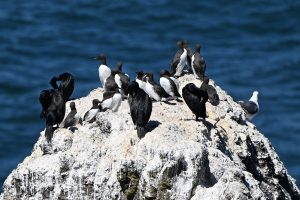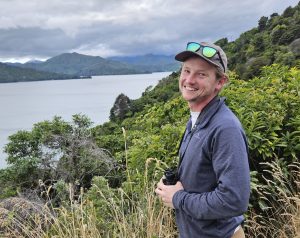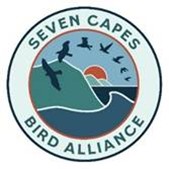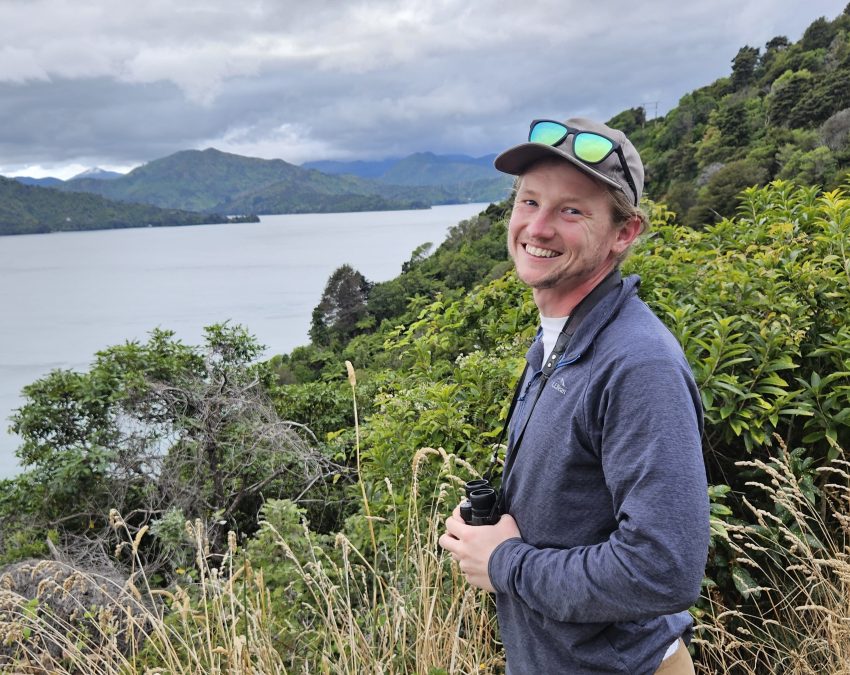How Can Photography Help Us Learn More About Oregon’s Seabirds? Presented by Will Kennerley, OSU
LINCOLN CITY, Ore. – Did you know that your observations can become meaningful data that scientists use to guide conservation decisions? Tools already at your fingertips, like phones and cameras, are invaluable sources of data that help researchers form a picture of current ecological conditions. The more good data that researchers can access, the more accurate that picture becomes—and that’s where you come in. By submitting observations to a community science database, anyone, regardless of experience, can contribute insights that drive conservation decisions.
Do you want to become a community scientist? Seven Capes Bird Alliance invites you to attend our fall webinar series, Your Data Is for the Birds, all about community science and how YOU can make a difference for bird conservation! This free, three-part series will introduce three different community science projects where you can get involved.
 In the first session on October 8, 6-7:30 p.m., Will Kennerley will present How Can Photography Help Us Learn More About Oregon’s Seabirds? Knowledge of species’ food requirements are necessary for effective conservation planning, yet these data are scarce for many of Oregon’s coastal birds. Many traditional methods of diet study are invasive, can disturb breeding birds, and are typically very limited in their spatiotemporal coverage. With the advance of digital photography, however, new noninvasive means of avian diet data collection are now available.
In the first session on October 8, 6-7:30 p.m., Will Kennerley will present How Can Photography Help Us Learn More About Oregon’s Seabirds? Knowledge of species’ food requirements are necessary for effective conservation planning, yet these data are scarce for many of Oregon’s coastal birds. Many traditional methods of diet study are invasive, can disturb breeding birds, and are typically very limited in their spatiotemporal coverage. With the advance of digital photography, however, new noninvasive means of avian diet data collection are now available.
Researchers at Oregon State University’s (OSU) Seabird Oceanography Lab have been using photography to monitor interannual dietary shifts in Oregon’s seabirds to understand how ocean conditions can influence the abundance of critical prey species. What’s more, this method allows anyone with a camera to assist in data collection. Birds with Fish, an OSU participatory science initiative, invites community members to contribute photographs of feeding marine/estuarine birds to statewide data collection efforts so that we can learn how to best protect Oregon’s abundant but vulnerable seabirds.
 Will Kennerley is a faculty research assistant in the Seabird Oceanography Lab at OSU’s Hatfield Marine Science Center in Newport. Will first came to OSU in 2020 for his MSc degree, during which he researched how the foraging ecology of Atlantic Puffins (Fratercula arctica) in the Gulf of Maine is impacted by marine heatwaves. He fell in love with Oregon’s seabirds during his graduate work and, since completing his degree in 2023, has shifted his focus to the incredible seabirds of the Pacific Northwest. He now works on diverse research projects, including monitoring seabirds at Yaquina Head, performing at-sea surveys for Marbled Murrelets (Brachyramphus marmoratus), and serving as lead contact for the “Birds with Fish” community science initiative.
Will Kennerley is a faculty research assistant in the Seabird Oceanography Lab at OSU’s Hatfield Marine Science Center in Newport. Will first came to OSU in 2020 for his MSc degree, during which he researched how the foraging ecology of Atlantic Puffins (Fratercula arctica) in the Gulf of Maine is impacted by marine heatwaves. He fell in love with Oregon’s seabirds during his graduate work and, since completing his degree in 2023, has shifted his focus to the incredible seabirds of the Pacific Northwest. He now works on diverse research projects, including monitoring seabirds at Yaquina Head, performing at-sea surveys for Marbled Murrelets (Brachyramphus marmoratus), and serving as lead contact for the “Birds with Fish” community science initiative.
When: Wednesday, October 8, 6-7:30 p.m.
Where: Online via Zoom. Webinar is free, but pre-registration is required. Register at www.sevencapes.org/dataforthebirds.
Learn more and register for the rest of the Your Data Is for the Birds series at www.sevencapes.org/dataforthebirds! Cooper Farr, National Audubon Society, will present 125 Years of Audubon’s Christmas Bird Count on Wednesday, November 5, 6-7:30 p.m. followed by Dr. Douglas Robinson, OSU, with Giving Back to Birds by Contributing Observations to eBird on Wednesday, December 3, 6-7:30 p.m. This series is brought to you by Seven Capes Bird Alliance in partnership with Oregon Birding Association, Mid-Willamette Bird Alliance, Cascade Head Biosphere Collaborative, and the OSU Bird Nerds.
 Seven Capes Bird Alliance was founded as Audubon Society of Lincoln City in 2005. A nonprofit membership organization and chapter of the National Audubon Society, Seven Capes is active in education and advocacy for protection of birds, other wildlife, and their habitats in Lincoln and Tillamook Counties.
Seven Capes Bird Alliance was founded as Audubon Society of Lincoln City in 2005. A nonprofit membership organization and chapter of the National Audubon Society, Seven Capes is active in education and advocacy for protection of birds, other wildlife, and their habitats in Lincoln and Tillamook Counties.


